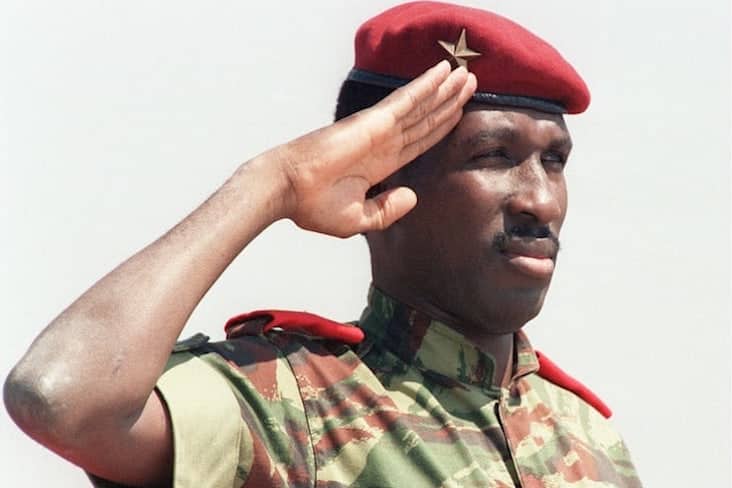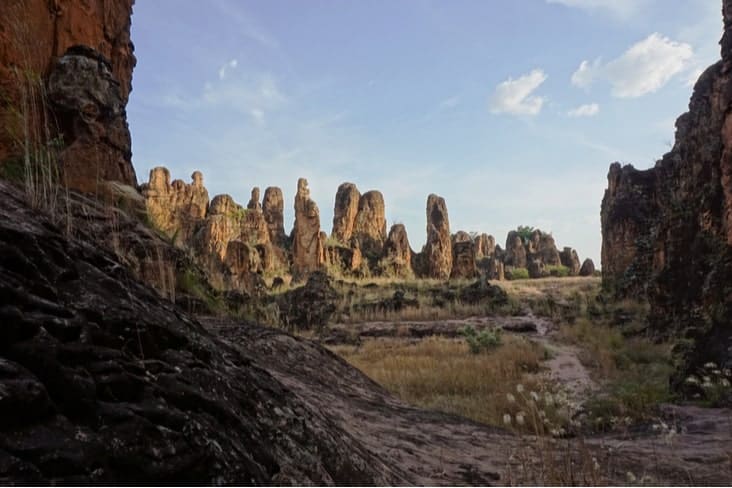Home to the “African Che Guevara” and one of the world’s youngest populations, these are the most interesting facts about Burkina Faso

Fast facts
Official name: Burkina Faso
Capital city: Ouagadougou
Population: 23,042,199
Area: 273,800 sq km
Major languages: French
Time zone: UTC (GMT)
Interesting facts about Burkina Faso
1. Burkina Faso is a landlocked country in West Africa. A landlocked country is entirely surrounded by land with no access to open sea.
2. Burkina Faso used to be known as Upper Volta until it changed its name in 1984.
3. Before colonisation, Burkina Faso was ruled by the Mossi who arrived in the region between the 11th to the 13th centuries and ruled until the end of the 19th.
4. They called the land Mogho (“country of the Mossi”) and established five independent kingdoms: Tenkodogo, Yatenga, Gourma, Zandoma, and Ouagadougou.

5. The kingdoms became a French protectorate in 1896. In 1919, Upper Volta became a separate constituent territory of French West Africa and then an autonomous republic within the French Community in 1958.
6. Burkina Faso (Upper Volta) declared independence from France on 5 August 1960.
7. Burkina Faso translates as “Land of the Honest (Incorruptible) Men”.
8. The capital city, Ouagadougou, is a French adaptation of the native name “Wogodogo,” meaning “where people get honour and respect”.
9. According to the UK Foreign Office, Burkina Faso is one of 17 countries deemed to be entirely unsafe for tourists to visit.
10. The flag of Burkina Faso is striped red and green with a central yellow star. Yellow represents the country’s mineral wealth, red represents the revolutionary struggle and green symbolises hope and abundance. The star stands for Sankara’s revolutionary principles.

11. Burkina Faso has three principal rivers: the Black Volta (Mouhoun), the Red Volta (Nazinon) and the White Volta (Nakambé). All of which converge in Ghana to form the Volta River which drains into Lake Volta.
12. Between 1960 and 1983, Burkina Faso experienced six coups and counter-coups.
13. As well as military coups, Burkina Faso has suffered from recurring droughts, particularly during the 1970s when drought caused a serious famine and killed an estimated 100,000 people by 1973.
14. This is largely due to Burkina Faso’s position in the Sahel region of West Africa. The Sahel is a savanna region increasingly afflicted by soil erosion and desertification.
15. Thomas Sankara, who ruled Burkina Faso for four years from 1983, is known as the “African Che Guevara” due to his radical left-wing policies and mysterious death in 1987.

16. Sankara, an accomplished guitarist, even wrote Burkina Faso’s national anthem himself.
17. Sankara’s deputy, Blaise Compaoré, took over and ruled Burkina Faso for 27 years before being ousted in a popular uprising in 2014. He was one of Africa’s longest-serving leaders.
18. Burkina Faso has three UNESCO World Heritage Sites: the Ruins of Loropéni, the Ancient Ferrous Metallurgy Sites and the transnational W-Arly-Pendjari Complex.
19. Burkina Faso is also home to the Grande Mosquée in Bobo-Dioulasso. Built in 1893, the mosque is an exceptional example of Sahel-style mud architecture.

20. People from Burkina Faso are known as Burkinabe.
21. The national symbol of Burkina Faso is the white stallion. The country’s coat of arms depicts a horse, the national football team is nicknamed Les Etalons (“The Stallions”) and the most common surname is Ouedraogo (meaning stallion).
22. The median age in Burkina Faso is just 18.6, making it among the ten youngest countries in the world.
23. The Sindou Peaks are one of Burkina Faso’s most unusual geological formations. The unique sandy cones have been shaped by the elements over millions of years.

24. Around 80% of the Burkinabe population is engaged in subsistence farming, a form of farming where nearly all of the crops or livestock are used to maintain the farmer and the farmer’s family, leaving little, or no surplus for sale or trade.
25. Burkina Faso has the 9th highest fertility rate in the world with an average of 4.8 children are born per woman.
Every effort has been made to verify these facts about Burkina Faso. However, if you find an error or have any questions, please contact us.
